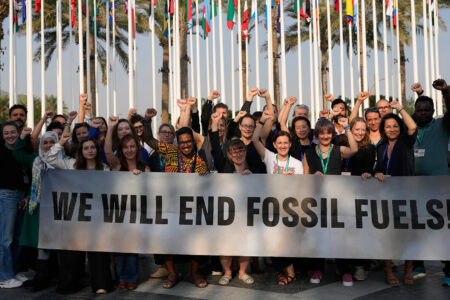
As part of the 2015 Paris Agreement on combatting global warming, about 190 parties to the agreement pledged nationally determined contributions (NDCs) that outlined the actions they would take to keep the increase in global average temperature below 2C compared with pre-industrial levels. Canada, the world’s 10th-largest emitter of greenhouse gases in 2019, committed to a 30 per cent reduction in its emissions from all sources from 2005 levels by 2030. The challenge will be how it will do that, given its poor reputation on climate change and its unambitious reduction targets.
In 2005, Canada emitted 730 megatonnes (Mt) of greenhouse gases, making its 2030 target 511 Mt. Between 2005 and 2018 (the most recent year for which statistics are available), Canada’s emissions had fallen by just one megatonne to 729 Mt (see figure 1). How then, is it expecting to reduce emissions by a further 218 Mt by 2030 to meet its NDC commitments?
Canada’s emissions are the sum of the emissions from its 10 provinces and three territories. Changes in national emissions reflect federal policies and policies as well as economic events at the provincial or territorial level. For example, the drop in emissions between 2007 and 2009 was caused by a combination of Ontario reducing its reliance on coal-fired generation to improve air quality and the financial downturn in 2007-08. The subsequent growth in emissions after 2009 is largely attributable to an expansion of oil sands extraction. This means many of the climate-control decisions are controlled by the provincial or territorial, rather than the federal, governments.
The 2020 plan
In December 2020, the federal government introduced the Canadian Net-Zero Emissions Accountability Act, which commits Canada to reaching net zero by 2050 and also includes a $15-billion plan with 64 measures intended to achieve the country’s 2030 target. The measures include funding for green community buildings; home energy-efficiency upgrades; commercial and large building retrofits; money to plant two billion trees; funding for rapid decarbonization projects; smart grid and grid-modernization projects; and subsidies for zero-emission vehicles.
The federal government has also redesigned its existing carbon pricing system. The existing program terminates in 2022 at $50/tonne. The new program starts in 2023 at $65/tonne with a $15/tonne annual increment (an increase from the previous plan of $10/tonne per year), ending in 2030 at $170/tonne. Canada’s carbon price is applied piecemeal across the country, with some regional prices a fraction of the national price. In regions paying the full federal price, low- and middle-income individuals and families can receive quarterly carbon rebates based on an estimated average regional energy consumption.
At the time the federal government released its Net-Zero Act, it also unveiled its strengthened climate plan A Healthy Environment and a Healthy Economy to “create jobs and support people, communities, and the planet.” According to the modelling and analysis used for its climate plan, Canada would not only meet, but exceed, its 2030 target.
However, based on data available in Canada’s national inventory reports, the plan may be overly optimistic. Figure 2 shows Canada’s historical total emissions for 2005 and 2018, the projected emissions for 2020 and 2030 and Canada’s 30 per cent target. The projected emissions (the blue bars labelled “reference”) are Canada’s expected emissions without the federal government’s new climate plan and the green bars labeled “plan” are the expected emissions with the climate plan. (Because the legislation was introduced in 2019, actual emissions for 2019 and 2020 were not available.)
From 2018 to 2020 inclusive, emissions are projected to decline by 117 Mt, from 729 Mt to 612 Mt. Of the 117 Mt decline, about 21 per cent is the result of a change in the way Canada determines its total emissions. The remaining 79 per cent is a combination of anticipated changes in emissions in various sectors and the economic impact of COVID-19.
If the federal government’s plan is not followed, the 2030 reference case emissions are 657 Mt – an increase of 45 Mt from 2020. However, if the new plan is achieved, emissions are expected to decline by 81 Mt to 531 Mt from 2020, falling short of the 2030 commitment by 20 Mt.
There is a caveat, however. Prior to 2020, land use, land-use change, and forestry were excluded (LULUCF). But starting in 2020, total emissions include LULUCF, greenhouse-gas sequestering using nature-based solutions (NBS) and a program to reduce emissions from the use of agricultural fertilizers. By including LULUCF (an expected 17 Mt decline) and NBS, and changes to agriculture (a further 10 Mt decline), emissions drop to 503 Mt, exceeding Canada’s NDC by 8 Mt (totals differ due to rounding).
Changes in sectoral emissions
If the federal government’s new climate change plan is achieved, Canada’s emissions will have declined, with 52 per cent of this decrease occurring between 2018 and 2020 and 48 per cent after 2020.
The modelling and analysis document also includes sectoral emissions, making it possible to determine the changes in emissions by sector for 2018, 2020 and 2030 (using the enhanced LULUCF). There are several possible reasons for these changes (see figure 3).
Waste and others: Most of the emissions reductions in this sector will take place because of new methane-capture regulations for solid waste facilities.
Electricity: Most of Canada’s electricity comes from hydroelectric, nuclear, natural gas and renewable sources, with about seven per cent from coal. Although electricity is a provincial and territorial responsibility, the federal government requires all electricity suppliers to at least partially decarbonize by phasing out coal by 2030. Alberta says it will phase out all coal use by 2023, meeting demand with natural gas and renewables. Saskatchewan and Nova Scotia have equivalency agreements with the federal government that allow them to reduce their coal consumption to zero by 2040. New Brunswick plans to phase out coal by 2030. The emissions in the electricity sector in 2030 are from natural gas and the provinces with equivalency agreements to continue using coal in the short term.
Agriculture: Agricultural emissions are essentially unchanged between 2018 and 2030.
Heavy industry: As in other countries, Canadian industry has been hurt greatly by the pandemic when compared to past economic declines. This is due in large part to the decline in cross-border trade with the United States and a decline in business investment. Based on the continued decline in emissions post-2020 to 2030, it would appear that the climate plan assumes either there is a radical decarbonizing of heavy industry or that parts of Canada’s heavy industry will cease to operate as the country continues to transition to low-carbon industries.
Buildings: For a building to reduce its emissions, it must be using a carbon-intensive fuel (such as natural gas or fuel oil, as opposed to electricity) usually for space heating or cooling and domestic water heating and then decouple (for example: reduce its energy demand) or decarbonize (restructure its energy system by switching to a lower-emissions energy source, typically electricity). The national carbon pricing system and the availability of financial support for reducing building energy demand are expected to encourage homebuilders and owners to make improvements and use low-emission energy sources for heating. Reducing building emissions, notably residential, is important because Canada’s population is projected to increase in the next 10 years.
Transportation: Between 2018 and 2030, emissions in the transportation sector are expected to drop, with the bulk of the decline (about 89 per cent) occurring between 2018 and 2020 in for example, private transportation, air travel and the movement of goods by rail. While it seems counterintuitive despite the national carbon-pricing system, the federal government and various provincial subsidy programs for electric vehicles along with a federal plan for using hydrogen in transportation, emissions are projected to decline by only 4 Mt between 2021 and 2030. This could be explained in part by a growing demand for light-duty trucks offsetting emissions reductions from the modest interest in electric vehicles.
Oil and gas: Emissions in this sector are primarily from the extraction of heavy crudes and bitumen in Western Canada. Demand for gasoline in the United States fell during 2020 but is recovering. There is an expectation of an increase in U.S. crude oil imports, which bodes well for Canadian producers (the U.S. is the largest export market for Canadian crude oil). Looking ahead to 2030, there are commitments to reduce the emissions of heavy oil and bitumen extraction, new methane-capture regulations and increasingly stringent output-based pricing systems. It also reflects the anticipated leveling off of global demand for crude oil over the next decade and into the 2030s and the difficulty Canadian producers are having in increasing their access to U.S. and overseas markets.
Canada’s emissions in 2018 were effectively the same as they were in 2005 (its NDC starting date), meaning it will need to reduce its emissions by an average of 18.2 Mt/year, from 729 Mt in 2018 to 511 Mt in 2030. Based on the Canadian federal government’s analysis, more than half of this reduction will have taken place in 2019 and 2020, primarily because of the impact of COVID on the Canadian economy and the inclusion of the modified LULUCF in its emissions calculations.
To meet its revised target, Canada’s emissions will need to fall by a further 109 Mt by 2030. The use of the modified LULUCF will help, with most of the remaining reductions coming from three sectors: oil and gas, electricity and buildings.
Of the three, the electricity target is the most likely to be achieved because most of the corporate decisions regarding restructuring and decarbonizing the affected systems have already been made. Decarbonizing Western Canada’s oil and gas sector could be hampered by a post-pandemic surge in U.S. oil demand and the possible completion of the TransMountain pipeline to the Pacific coast to allow more exports to Asia, although decarbonization could be helped by the termination of the Keystone XL pipeline. Reducing emissions in buildings will need a combination of decoupling and decarbonizing in existing buildings to reduce emissions, as well as a way of ensuring that most new buildings use non-emitting sources for heating and cooling.
Canada will need to reduce emissions by about 11 Mt/year between 2021 and 2030. While losing more than 10 Mt/year over a decade is not unheard of, it is often due to an unexpected event. Germany’s economic policies after its reunification in 1990 contributed to its decline of about 20 Mt/year. The 2008 economic slump and the Euro crisis saw Italy’s emissions decline about 15 Mt/year. The 2008 economic slump, a decade of austerity and a rapid decarbonization of the electricity sector between 2012 and 2017 resulted in the U.K.’s emissions declining about 19 Mt/year.
Canada already has a reputation for being a climate laggard and having an unambitious climate target. Meeting 52 per cent of its NDC by relying on the pandemic and changing the way LULUCF is calculated does little to change these perceptions. How Canada meets the remaining percentages, whether by pandemic or policy, will determine if it can shake this reputation.







